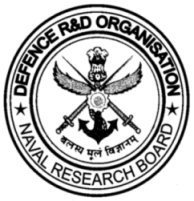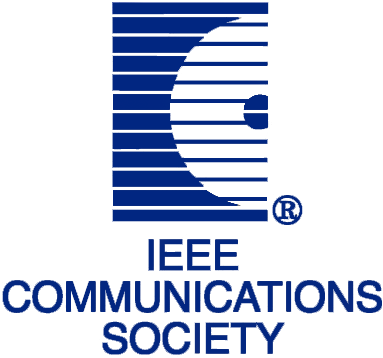NCC 2014 TUTORIALS
Slot |
Speaker(s) |
Affiliation |
Title |
Timings |
Venue |
T1 |
Dr Vinod Prabhakaran | Tata Institute of Fundamental Research(TIFR), Mumbai | Computing with Information Theoretic Security | 09:30 - 12:45 |
L-16 |
T2 |
Dr. Shirish Nagaraj | Nokia Solutions and Networks, Arlington Heights, IL, USA | Co-operative Wireless Networks: From Theory to Practice | 09:30 - 12:45 |
L-17 |
T3 |
Dr. Preeti Rao | Indian Institute of Technology (IIT) Bombay | Music Signal Processing | 09:30 - 12:45 |
L-2 |
T4 |
Dr. Neelesh B. Mehta Dr. Chandra R. Murthy |
Indian Institute of Science (IISc), Bangalore | Energy harvesting wireless communication systems | 13:30 - 16:45 |
L-16 |
T5 |
Dr. Niloy Ganguly Bivas Mitra |
Indian Institute of Technology (IIT) Kharagpur | Social Networks | 13:30 - 16:45 |
L-17 |
T6 |
Dr. Arun Kumar | Indian Institute of Technology (IIT) Delhi | Text-to-speech-synthetic Advances and Challenges | 13:30 - 16:45 |
L-15 |
TUTORIAL INFORMATION
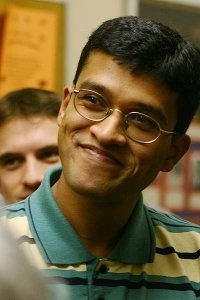
| Dr. Vinod Prabhakaran | ||
| Tata Institute of Fundamental Research, Mumbai, India | ||
| Title | : | Computing with Information Theoretic Security |
| Chair | : | Adrish Banerjee |
| Date | : | Feb 28, 2014 |
| Timings | : | 09:30 - 12:45 |
| Venue | : | L-16 (Lecture Hall Complex) |
Abstract:
This tutorial will focus on computing in networks while providing
information theoretic (or unconditional) security guarantees. We will cover
results from two different fields: Network information theory has studied
how the stochasticity of noisy channels and distributed sources can be
exploited by mutually trusting parties to collaborate in the presence of
adversaries. Secure Multiparty Computation, a major area of modern
cryptography, has studied whether and how mutually distrusting parties can
safely collaborate. Specifically, how they may compute functions of data
they hold without revealing to each other anything more than the function
values they compute.
Bio:
Vinod M. Prabhakaran received his Ph.D. from the University of California, Berkeley. He was a Postdoctoral Researcher at the Coordinated Science Laboratory, University of Illinois, Urbana-Champaign and at Ecole Polytechnique Fédérale de Lausanne, Switzerland. He is a Reader in the School of Technology and Computer Science at the Tata Institute of Fundamental Research, Mumbai. His research interests are in information theory, wireless communication, cryptography, and signal processing. He has received the Tong Leong Lim Pre-Doctoral Prize and the Demetri Angelakos Memorial Achievement Award from the EECS Department, University of California, Berkeley, and the Ramanujan Fellowship from the Department of Science and Technology, Government of India.
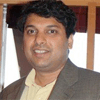
| Dr. Shirish Nagaraj | ||
| Research Manager | ||
| Nokia Solutions and Networks, Arlington Heights, IL, USA | ||
| Title | : | Co-operative Wireless Networks: From Theory to Practice |
| Chair | : | Aditya Jagannatham |
| Date | : | Feb 28, 2014 |
| Timings | : | 09:30 - 12:45 |
| Venue | : | L-17 (Lecture Hall Complex) |
Abstract:
A key challenge to next generation cellular networks is to provide high capacity for data-intensive applications in hot-spots and events, which
include stadiums, shopping malls, and dense urban areas. Cellular
operators are looking at deploying dense networks of small cells in a
selective manner to provide service in such high demand regions. Capacity
of such deployments is inherently limited by inter-cell interference,
making it challenging to scale capacity as a function of cell density in a
cost-effective manner.
Co-operating transmission and reception mechanisms, commonly referred to as co-ordinated multi-point (CoMP), are critical to solve the capacity bottleneck arising in these dense radio access networks. In this tutorial, we will give an in-depth review of techniques to achieve high capacity uplink and downlink data rates using the notion of co-operating clusters with multi-antenna processing, interference cancellation, interference alignment, distributed power control and co-operative scheduling. We present architectures and algorithms allowing a different mix of centralized and distributed processing to enable co-operating cluster processing. Theoretical underpinnings of such algorithms in terms of network utility maximization framework will be presented. Novel approaches for design and analysis of joint algorithm and co-operative processing architectures will also be outlined. Discussion of all the approaches reviewed will be accompanied by detailed performance analysis via system simulations, which will be shown to shed key insights into the design of such next generation co-operative wireless networks.
Bio:
Dr. Shirish Nagaraj is a research manager at Nokia Solutions and Networks
(NSN), in their Technology & Innovation-Research department, where he
leads a group conducting research in the areas of statistical signal
processing, wireless communications and machine learning. Prior to NSN, he
was with Motorola Inc. and earlier with Bell Labs - Lucent Technologies,
in their research and advanced technologies organizations. Dr. Nagaraj has
a Ph.D. and an M.S. from the University of Notre Dame in 2000 and 1997
respectively, and a B. Tech. from the Indian Institute of Technology
Bombay in 1995, all in Electrical Engineering. He also has a graduate
certificate from the Statistics Department of Stanford University in 2010
in the area of machine learning. Dr. Nagaraj holds 18 patents and has
published in refereed journals and conferences in the areas of signal
processing and communications. He is a recipient of the "Best Paper Award" at the IEEE WCNC conference in 2012, the "Bell Labs Presidents' Gold
Award" at Lucent Technologies in 2005, and the "Best Researcher" award
from the University of Notre Dame in 2000.
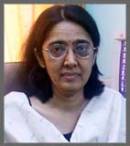
| Dr. Preeti Rao | ||
| Indian Institute of Technology Bombay | ||
| Title | : | Music Signal Processing |
| Chair | : | L. Behera |
| Date | : | Feb 28, 2014 |
| Timings | : | 09:30 - 12:45 |
| Venue | : | L-2 (Lecture Hall Complex) |
Abstract:
Speech and music are cognitively the two most complex categories of
sound. From a signal processing perspective, these signals embed a
variety of perceptually meaningful attributes. Signal processing has been
traditionally employed in music for synthesis and compression, and more
recently for search, interactivity, personalization, education and
copyright enforcement. As in any signal processing application to real
signals, domain knowledge in terms of the signal characteristics is very
useful. Music exhibits diversity across cultures but also contains much
that is common. This tutorial will discuss signal properties and describe
signal representations and processing methods that are applied in music
technology. Apart from an improved understanding of signal processing
methods for audio, participants are expected acquire a degree of
confidence in applying available tools to music signals and interpreting
the outputs in an informed manner.
Bio:
Preeti Rao is a Professor in the Department of Electrical Engineering, I.I.T. Bombay. She received the B.Tech. EE degree from I.I.T. Bombay in 1984, and M.S. and Ph.D. from the University of Florida, Gainesville in 1987 and 1990 respectively. She taught at I.I.T. Kanpur from 1994 until 1999, and has been on the faculty in EE at I.I.T. Bombay since then. She has held visiting positions at Hitachi CRL in Tokyo and at IPO, Center for User-System Interaction, Eindhoven, the Netherlands. Her research interests are in speech and audio signal processing with focus currently on developing technology for music retrieval, and music and spoken language education.
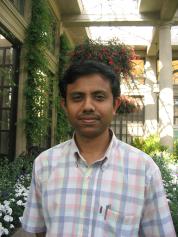
| Dr. Neelesh B. Mehta | ||
| Indian Institute of Science(IISc), Bangalore | ||
| Title | : | Energy harvesting wireless communication systems |
| Chair | : | Ketan Rajawat |
| Date | : | Feb 28, 2014 |
| Timings | : | 13:30 - 16:45 |
| Venue | : | L-16 (Lecture Hall Complex) |
Abstract:
Energy harvesting is an emerging and promising functionality in wireless systems. By making nodes harvest renewable energy from a variety of energy sources, it promises dramatic improvements in network longevity and performance. Given its promise as a green communication technology, it has evinced considerable interest from academia and industry. However, the energy harvesting functionality also triggers a redesign of the various layers of the protocol stack. The design focus shifts to judiciously utilizing the harvested energy, which can be uncontrollable or random, and ensuring that the energy is available when required. The goal of the tutorial is to give an overview of the various facets of energy harvesting in wireless networks. A wide range of aspects all the way from theoretical modelling, analysis, and performance optimization to hardware prototyping, industry activity, and applications are presented. The tutorial first describes the applications that have motivated the use of energy harvesting, the components that together make an energy harvesting system, and the hardware prototypes of energy harvesting systems. Thereafter, it introduces various models for energy harvesting that drive energy harvesting system design and performance analysis. It then examines in detail the problems related to the design of the physical layer, multiple access layer, and higher layers that have been investigated in the growing literature on energy harvesting. It ends with a glimpse into the activity in the industry and standardization bodies on this topic, and some speculation about what the future holds for this up-and-coming area.
Bio:
Neelesh B. Mehta received his B. Tech. degree in Electronics and Communications Eng. from the Indian Institute of Technology (IIT), Madras in 1996, and his M.S. and Ph.D. degrees in Electrical Engineering from the California Institute of Technology, Pasadena, CA, USA in 1997 and 2001, respectively. He is now an Associate Professor in the Dept. of Electrical Communication Eng., Indian Institute of Science (IISc), Bangalore, India. Prior to joining IISc, he held research scientist positions at AT&T Laboratories, NJ, Broadcom Corp., NJ, and Mitsubishi Electric Research Laboratories (MERL), MA, in USA. His research includes work on multiple access protocols, next generation cellular system design and analysis, energy harvesting wireless networks, MIMO and antenna selection, cooperative communications, and cognitive radio. He was also actively involved in the Radio Access Network (RAN1) standardization activities in 3GPP from 2003 to 2007. He was a TPC co-chair for tracks/symposia in COMSNETS 2014, Globecom 2013, ICC 2013, WISARD workshop 2010 and 2011, NCC 2011, VTC 2009 (Fall), and Chinacom 2008. He has co-authored 45+ IEEE transactions papers, 70+ conference papers, and three book chapters, and is a co-inventor in 20 issued US patents. He is an Editor of the IEEE Transactions on Communications, IEEE Wireless Communications Letters, Sadhana, and an Executive Editor of the IEEE Transactions on Wireless Communications. He currently serves as a Member at Large on the Board of Governors of the IEEE Communications Society. He served as the Director of Conference Publications on the Board of Governors in 2013-14.

| Dr. Chandra R. Murthy | ||
| Indian Institute of Science(IISc), Bangalore | ||
| Title | : | Energy harvesting wireless communication systems |
| Chair | : | Ketan Rajawat |
| Date | : | Feb 28, 2014 |
| Timings | : | 13:30 - 16:45 |
| Venue | : | L-16 (Lecture Hall Complex) |
Bio:
Chandra R. Murthy received the B. Tech. degree in Electrical Engineering from the Indian Institute of Technology, Madras, Chennai, India in 1998 and the M.S. degree in Electrical and Computer Engineering from Purdue University, West Lafayette, IN, USA in 2000. In 2006, he obtained the Ph.D. degree in Electrical and Computer Engineering from the UC San Diego, La Jolla, CA, USA. The title of his thesis was “Channel Estimation and Feedback for Multiple Antenna Communication.” From Aug. 2000 to Aug. 2002, he worked on WCDMA baseband transceiver design and 802.11b baseband receivers at Qualcomm, Inc, San Jose, USA; and from Aug. 2006 to Aug. 2007, he worked on advanced receiver algorithms for the 802.16e mobile WiMAX system at Beceem Communications (now Broadcom), Bangalore, India. Currently, he is working as an Associate Professor in the department of Electrical Communication Engineering at the Indian Institute of Science, Bangalore, India. His research interests are in the areas of Cognitive Radio, Energy Harvesting Wireless Sensors, MIMO systems with channel-state feedback, and sparse signal recovery. He has co-authored 20+ journal papers, 45+ peer-reviewed conference papers, and 1 book chapter. He has served as TPC Co-Chair for NCC 2011, 2013, SPCOM 2014; and on the organizing committee for SPCOM 2010, 2012. He is an IEEE senior member and an elected member of the IEEE Signal Processing Society Technical Committee for Signal Processing and Communications. He is also serving as an associate editor for the IEEE Signal Processing Letters.

| Dr. Niloy Ganguly | ||
| Indian Institute of Technology Kharagpur | ||
| Title | : | Social Networks |
| Chair | : | Y.N Singh |
| Date | : | Feb 28, 2014 |
| Timings | : | 13:30 - 16:45 |
| Venue | : | L-17 (Lecture Hall Complex) |
Abstract:
In this tutorial, we will discuss two major topics
a) Growth of Social Networks
b) Community Formation of Social Networks
Social Networks – like Peer-to-peer Networks (Kazaa, Gnutella) and Online Social Networks (Twitter, Facebook) – grows over time. New nodes join the
network and get connected to existing nodes forming a complex network. The
growth pattern is generally preferential whereby new nodes have tendency to
connect to popular nodes. However, due to bandwidth restriction the number
of connections a popular node can accept is restricted. The first half of
the tutorial will discuss the growth dynamics of such socio-technical
networks and present analytical tools needed to predict the growth.
Community Formation – The connectivity of social networks is not uniform
with some nodes more tightly connected within them. This leads to the
formation of community which in turn has implications in information flow
over the network and hence in the protocol design. The second half of the
tutorial will discuss various types of community formed and the community
detection algorithm. The process how these communities evolve over time
would also be discussed.
Bio:
Niloy Ganguly is an associate professor in the department of computer science and engineering, Indian Institute of Technology Kharagpur. He has received his PhD from Bengal Engineering and Science University, Calcutta, India and his Bachelors in Computer Science and Engineering from IIT Kharagpur. He has been a post doctoral fellow in Technical University of Dresden, Germany. He focuses on dynamic and self-organizing networks especially peer-to-peer networks, online-social networks (OSN) etc. He has also simultaneously worked on various theoretical issues related to dynamical large networks often termed as complex networks. Specifically he has looked into problems related to percolation, evolution of networks as well as flow of information over these networks. He has been collaborating with various national and international universities and research lab including Duke University, TU Dresden, Germany, MPI PKS and MPI SWS, Germany, Microsoft Lab, India etc. For further information visit his webpage http://www.facweb.iitkgp.ernet.in/~niloy/
Go to top Go to the technical program page →
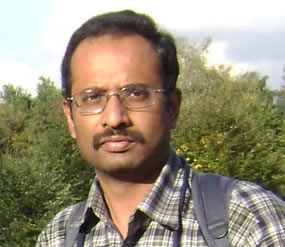
| Dr. Bivas Mitra | ||
| Indian Institute of Technology Kharagpur | ||
| Title | : | Social Networks |
| Chair | : | Y.N Singh |
| Date | : | Feb 28, 2014 |
| Timings | : | 13:30 - 16:45 |
| Venue | : | L-17 (Lecture Hall Complex) |
Bio:
Go to top Go to the technical program page →

| Dr. Arun Kumar | ||
| Centre for Applied Research in Electronics (CARE) | ||
| Indian Institute of Technology Delhi | ||
| Title | : | Text-to-speech-synthetic Advances and Challenges |
| Chair | : | Rajesh Hegde |
| Date | : | Feb 28, 2014 |
| Timings | : | 13:30 - 16:45 |
| Venue | : | L-15 (Lecture Hall Complex) |
Abstract:
Text-to-speech (TTS) is an important component of human and machine
communication by voice. It has a long history of development that initially focused
on intelligibility and later on naturalness and expressiveness aspects of the
synthesized speech. It is now possible to synthesize very good natural quality speech
in English and several other languages. Many applications now use real-time speech
synthesis. These include telephone based query answering services, book and
display readers, assistive aids for handicapped persons, answering devices on robots,
cars, surgery equipment, announcement booths etc. Some of the newer applications
include personalized speech synthesis, speech-to-speech translation and voice
reconstruction for persons with vocal disorders. The task of developing TTS systems
in multiple languages can be organized by using excellent open-source tools and by
following a multi-lingual approach. However, significant development work including
language-specific work is still needed for natural quality TTS in most Indian
languages. Specific efforts are also required for dialog systems to reach the level
where a human being's speech can be replaced by a TTS system in a natural
conversation setting.
This tutorial shall give an overview of the architecture of a generic TTS
system, including the important methods and issues related to text processing and
analysis, and speech synthesis. In text processing, the tasks of text normalization,
text-tagging involving grapheme-to-phoneme conversion, and prosodic analysis shall
be discussed. Synthesis approaches are usually classified in to "rule-based" and "corpora-based" methods, although some TTS approaches may be considered as a
combination of these two methods. The important corpora based methods of
concatenative speech synthesis including unit-selection synthesis, and the promising
Hidden Markov Model based TTS shall be discussed, including their relative practical
advantages and disadvantages. The efforts towards generating naturalness and
expressiveness in the synthesized speech shall be presented.
Some important aspects specific to the development of a Hindi TTS system shall be presented with examples. Finally, certain topics deserving of R&D attention such as emotional speech synthesis and personalized speech synthesis shall be highlighted. Speech synthesis is done in specific a person's voice for which annotated databases have to be carefully developed. This makes the whole process quite time-consuming and expensive to replicate in a new voice. However, personalized speech synthesis that refers to speech synthesis in a specific person's voice can be useful for several applications. We shall see how this may be possible to do relatively quickly in any desired voice by using voice conversion as a post-processor on a default TTS synthesized voice.
Bio:
Professor Arun Kumar received the B.Tech, M.Tech, and PhD degrees in Electrical
Engineering from the Indian Institute of Technology, Kanpur, between 1988 and 1995.
He was a Visiting Researcher at the University of California, Santa Barbara, USA, from
1994 to1996.
Since 1997, he has been with the Centre for Applied Research in Electronics, IIT Delhi,
where he is currently Professor and Head. His research interests span the areas of digital
signal processing, speech processing, underwater and air acoustics, and
communications. His current R&D work encompasses the areas of acoustic vector
sensors, spatial localization of radiating acoustic sources in air and underwater,
bearings-only-target motion analysis, acoustics based detection and localization of snow
avalanches, acoustic stratigraphy of layered snow media, text-to-speech synthesis for
Indian languages, voice personality transformation, and objective evaluation methods of
speech quality.
Prof. Arun Kumar has published 80 papers in refereed journals and conferences, and has
supervised 43 funded R&D projects from industry and government organizations. He is
currently an Editor of the IETE Journal of Research, and a Member of the Executive
Committee of IEEE Oceanic Engineering Society's India chapter

